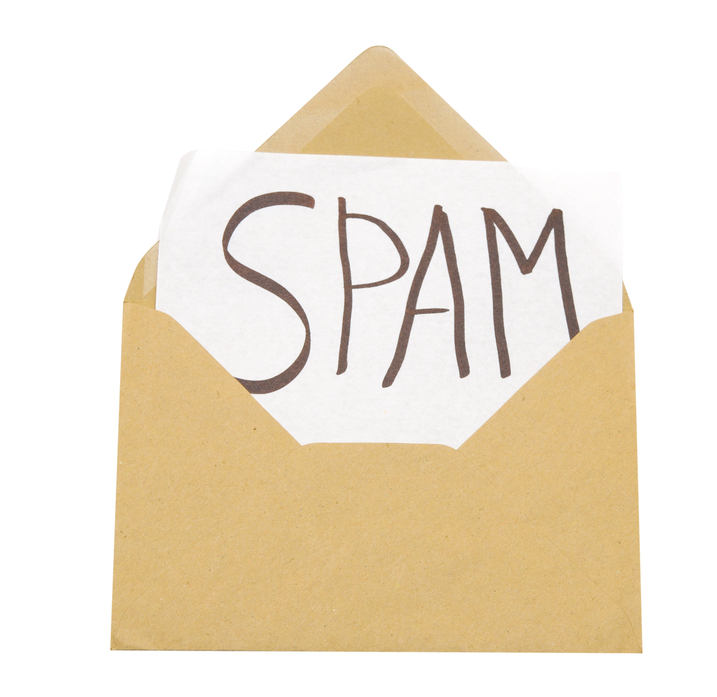Guest Post By Ed Zuckerberg
Posted on February 20, 2013
If you’re like me, you spend hours each day just reading and replying to e-mails. I know many people who spend twice as much time on e-mail per day (or more!) than they spend sleeping. Since we dedicate so much time to this task, you’d think that we could adhere to a few principles that would make e-mail less frustrating for all of us. I’m sure everyone has their e-mail pet peeves, but here are mine in order of induced exasperation. If I’m in your address book, pleeeeeeezzz don’t do these!
1) Mass e-mails where you “cc” your entire address book. If you just moved, had your account hacked, broke up with your bf/gf or experienced some other life-altering event that you feel you must share with your entire friend base, please use “bcc” (blind carbon copy) instead of “cc” (carbon copy). I get tons of spam as it is, and the last thing I need is for every Tom, Dick, and Harry in your address book to get my e-mail address so they can add me to their spam lists. I trusted you to act responsibly when I shared my address with you; don’t blow it! In the last few days alone, I’ve received no less than 5 e-mails where I was one of 30+ recipients that were “cc’d” – and if that wasn’t bad enough, the problem gets compounded when people start using “reply all,” and my inbox fills up with a ton of messages that frankly I couldn’t care less about.
The problem isn’t limited to individuals using improper etiquette either. Last month, I received a professional e-mail about a continuing dental education course that was offered to dentists in N.Y. State. I looked in horror at the e-mail that must have included the e-mail address of some 500 dentists in the “cc” field and wondered what exponential effect on spam in my inbox that would have.
SIMILAR: When Is It Not Ok To Announce Something Online
Here are some basic tips for sending an email to a bunch of people where you don’t have explicit permission to share their addresses with the entire group:
Address the e-mail to yourself or any recipient of the e-mail who has been warned that their e-mail is being shared. For example, if you are inviting a bunch of people to a party and someone else has volunteered to be the RSVP collator, send the e-mail to them, leave the “cc” field blank or put your own address there (lot’s of folks do that so they can have a copy of all e-mails sent in their own inbox instead of sent mail) and then locate the “bcc” field and add all the other e-mails in that field. Each recipient will then only see the e-mail address of the designated main recipient and yours in the “from” and “cc” field. Hey, they might even feel special thinking the guest list is very restricted as opposed to seeing that you invited everyone in carnation.
2) Please use the “reply all” feature of responding to e-mails purposefully. If you are one of a group receiving an e-mail, either intentionally or by someone’s indiscriminate use of the “cc” field as above, consider whether it is necessary for everyone that received the e-mail to see your reply or only the main sender or a select group. It’s easy to reply just to the sender and then “cc” one or two other recipients rather than pollute everyone who received the original e-mail. I often introduce two people via email (make sure all recipients have given permission to share their addresses first), and then they have an entire chain of conversation where they use reply all where I get every message they send to each other. Guys! I made the intro, and now please leave me out of the rest of your conversation.
“Reply all” can also get you in big trouble if you send a personal message in reply to a group e-mail, not intending for all to read, and accidentally hit “reply all” instead of reply. There was a group e-mail going around to condo owners in a ski resort that I was included in, and the topic was whether to allow owners to bring their dogs to the condos. One particular owner meant to complain to the board about a neighbor whose dog barked really loudly and also mentioned that the neighbors’ wife would scream loudly during sex as well. I’m sure he didn’t intend that remark to go to the whole group – but we all received it (and so did the neighbor!). My personal rule is to avoid using “reply all” except in rare instances and even then, rethink it before using that form of reply.
3) Give me a heads-up if you need to take more time to respond. I know you get a lot of e-mails. We all do. I’m not going to pain you with having the extra step of clicking on a send receipt so that I know you received my e-mail, but in return can you please just jot me a quick note that you are busy, vacationing, etc. and will get back to me if you can’t reply within a day? Rather than not respond to those who are waiting for a reply, I try to quickly delete or file away unimportant e-mails so that only the actionable items remain in my inbox. Then, I’ll either reply right away or let you know I received your e-mail and plan to respond in a day or two, etc. I hate it when I have to seem like a pain in the butt and resend the same e-mail twice because a week or a few days have gone by and I don’t know whether you are still alive or don’t care about my message.
WE ASKED YOU LAST WEEK: Your Top E-mail Pet Peeves
4) Start a new thread or change the subject line when you go off-topic. If I send you an e-mail with the subject line of “Our upcoming trip to Australia,” every subsequent reply will have the subject line “Re: Our upcoming trip to Australia.” That’s cool, but when you change topic and now ask me for advice on the best way to get rid of your back hair, please change the subject field so I can quickly find the e-mail I need to reply to a couple of days later after I have completed my research on depilatories. I’ve been in chains of e-mails twenty messages long that have completely evolved into new topics, but everyone still uses the original subject line that has nothing to do with the content of the message.
5) Are you sure you want that out there? E-mail is a permanent record. Much has been said about being careful of social media posts, drunken pictures, inappropriate comments, or racial slurs that have caused many to lose their jobs or be publicly ridiculed. No matter whether your e-mail is to one person or a group, anything you put out there has your brand on it and if inappropriate in nature can come back to haunt you. Before you hit the send button, rethink whether this message is something you really want out there in cyberspace, whether it’s bashing an individual, using curses that you normally refrain from using, or making unsubstantiated claims which might harm an innocent person.
CC you later!
Ed Zuckerberg
Meet Ed Zuckerberg
 Dr. Edward Zuckerberg has been a practicing Dentist for 35 years in Dobbs Ferry, NY where he and his wife, Karen, raised their 4 children, Randi, Mark, Donna and Arielle. An early adopter of technology, Dr. Zuckerberg’s office specializes in care for dental phobics of all ages and has been computerized since 1986, users of digital radiography since 1998, been paperless since 2005 and have employed a CAD/CAM device for same day, in-office fabrication of crowns, veneers and inlays since 2009. For the last three years Dr. Zuckerberg has also been lecturing nationally and internationally and is a frequent contributor to dental journals on the topics of technology integration and social media marketing for dentists and recently authored a chapter on marketing for a Cosmetic Dentistry textbook. His recently formed company, Painless Social Media, helps Dentists and small business owners gain more new clients and improve relationships with existing ones using social media.
Dr. Edward Zuckerberg has been a practicing Dentist for 35 years in Dobbs Ferry, NY where he and his wife, Karen, raised their 4 children, Randi, Mark, Donna and Arielle. An early adopter of technology, Dr. Zuckerberg’s office specializes in care for dental phobics of all ages and has been computerized since 1986, users of digital radiography since 1998, been paperless since 2005 and have employed a CAD/CAM device for same day, in-office fabrication of crowns, veneers and inlays since 2009. For the last three years Dr. Zuckerberg has also been lecturing nationally and internationally and is a frequent contributor to dental journals on the topics of technology integration and social media marketing for dentists and recently authored a chapter on marketing for a Cosmetic Dentistry textbook. His recently formed company, Painless Social Media, helps Dentists and small business owners gain more new clients and improve relationships with existing ones using social media.
What do you think of Ed’s tips? And what are your personal email etiquette rules? Tell us in the comments below!
Like what you’re reading? Request an invite for more: http://dotcomplicated.co/
You Might Also Like
- Sharing Passwords With Your Significant Other
- When Is It Not Ok To Announce Something Online
- Your Top E-mail Pet Peeves













Leave A Comment
You must be logged in to post a comment.